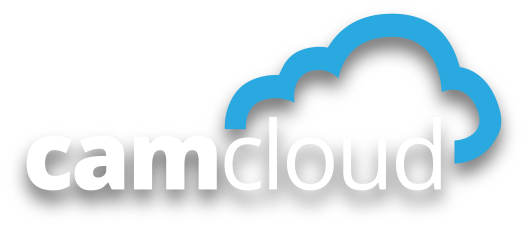This article explains how to setup an IP camera that has no direct integration with Camcloud to enable cloud storage and other features.
Camcloud is not affiliated with or certified by ONVIF, Inc. References to ONVIF are for compatibility purposes only.
First you want to get your IP camera on your network. Follow your camera's documentation to complete this step.
Login to camcloud.com and go to the “Timeline” page and select Add Camera.
There are 4 general steps required to setup an IP camera with Camcloud.
- Camera Info. Select your camera type (in this case, Generic or ONVIF*):
- *ONVIF will not work for all cameras, this method requires your camera supports ONVIF and it must use the industry standard methodology (not all cameras do).
- Camera Info. Select your camera name and the connection Method, generally you will be using the default Port Forward method, the Secure Tunnel method is an option but it requires a 24/7 onsite server running software we can provide.
- Network. If you have not setup the camera on your network with port forwarding, please STOP HERE. Read our Port Forwarding Guide for instructions on this before proceeding further. This is where you give Camcloud the camera’s login credentials, IP address and ports. It requires port forwarding to work with IP cameras.
Generic Camera Method: This method only requires the RTSP port to be forward but you also need to specify the RTSP path, The RTSP path will look something like this: /videostream.cgi or /channel1. Your documentation might show a full path of the IP and port, but you only want to enter the path after that. For example if your documentation says: rtsp://xx.xx.xx.xx:554/channel1, you only want to enter the path of: /channel1 into the path field.
ONVIF: . This will require two port forwards, the first for RTSP and the second for the ONVIF port (often this is the same port as the HTTP port, however you will need to consult your camera manual). The username and password may also be different than the one you use to log in to the camera, as some cameras require you configure an ONVIF user. - Settings. Some final camera settings, for Generic cameras you will only be able to select your Recording mode and notification settings, for ONVIF cameras you will also be able to set your resolution, bitrate and framerate:
3. Settings Up Motion events
Once your camera is setup on your network there are a few remaining settings required in order to add cloud storage of your motion events. You will be provided FTP credentials specific to the camera. You can retrieve them any time by clicking the dropdown menu for the added camera and selecting "FTP":



First, configure your camera to send motion events. This varies per camera but typically involves three steps:
Once your camera is setup on your network there are a few remaining settings required in order to add cloud storage of your motion events. You will be provided FTP credentials specific to the camera. You can retrieve them any time by clicking the dropdown menu for the added camera and selecting "FTP":



First, configure your camera to send motion events. This varies per camera but typically involves three steps:
- Input FTP credentials. Your camera will have a place to enter the FTP credentials. Take the credentials provided to you when you created the camera. Enter the address, your credentials, port (21) and make sure to select passive mode if you have that option.
Tip: Some cameras ask for you to enter a path or upload folder. Typically this can be left empty but some cameras require this option to be filled in. In that case enter anything like “videos” or forward slash (/).
- Enable motion detection - most cameras simply have a checkmark or something that says: yes, please send motion events. Here you will create "Motion events" or "Action" or "Snapshot" to trigger an event to that FTP. It varies per camera. You might also have something called "Interval" which must be set to specify the number of seconds between motion events, keep the number low.
- Create motion detection area. Some cameras require you to draw the areas of where you want it to detect motion. Many cameras don’t have this option but if you do you typically find it under the motion detection options.
- Once you’ve added the supplied FTP credentials to your camera’s configuration, you’re ready to start using your IP camera with Camcloud!


